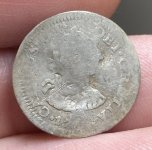I need a way to accurately (as much as possible) determine the depth & location of a sizable treasure cache. Ideally, this would work in depths up to 100ft. I've read some negative reports on numerous devices at http://geotech.thunting.com, so any help or guidance would be very appreciated.
Also, any advice on how the slope of a hill would impact detector readings? (meaning...if I'm on a slight slope.....will the target be straight down or will it be at a right angle to the slope of the ground?
Many Thanks
Ed
Also, any advice on how the slope of a hill would impact detector readings? (meaning...if I'm on a slight slope.....will the target be straight down or will it be at a right angle to the slope of the ground?
Many Thanks
Ed





